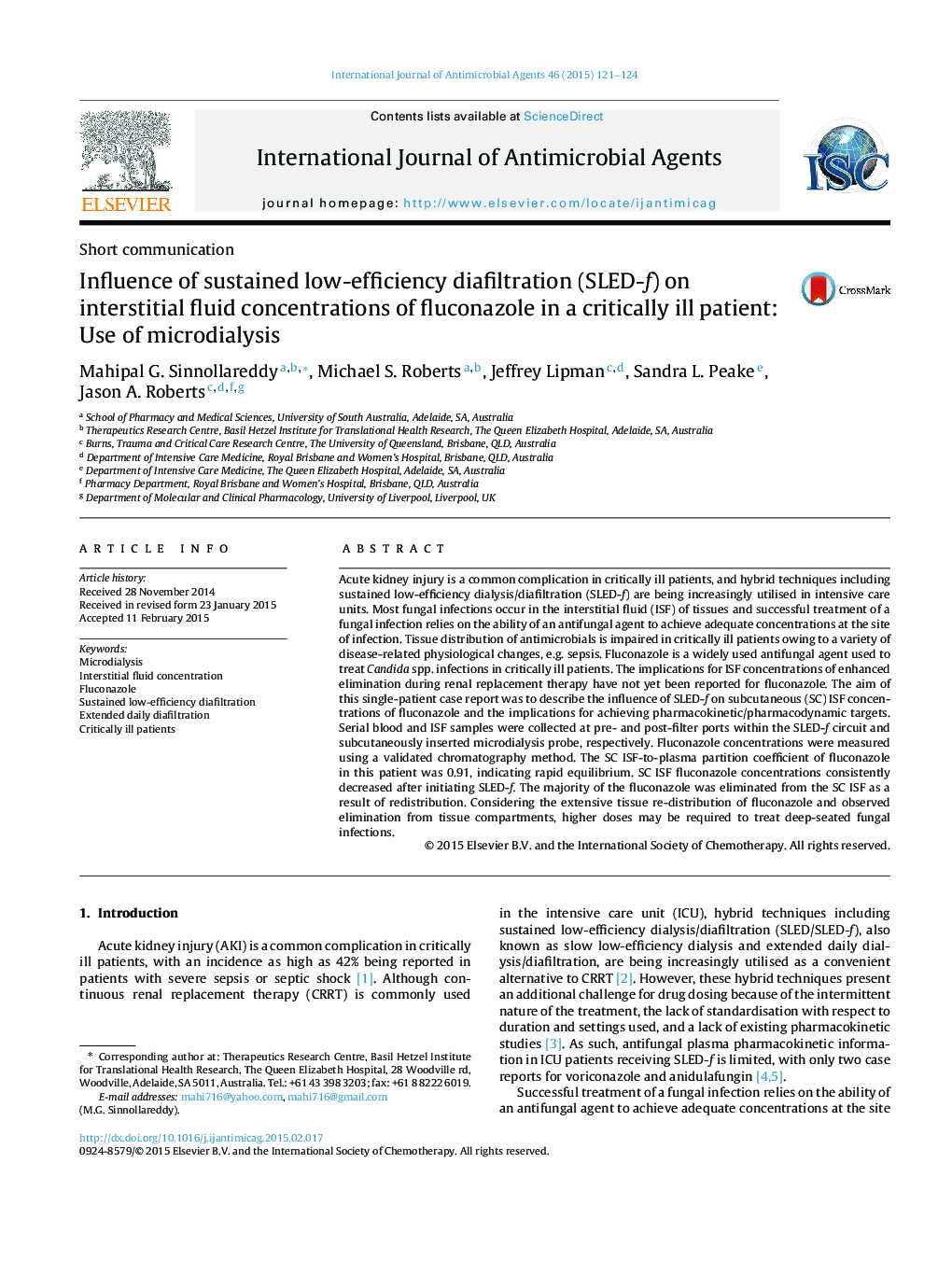| کد مقاله | کد نشریه | سال انتشار | مقاله انگلیسی | نسخه تمام متن |
|---|---|---|---|---|
| 3358635 | 1591764 | 2015 | 4 صفحه PDF | دانلود رایگان |

• We describe the influence of sustained low-efficiency diafiltration (SLED-f) on tissue concentrations of fluconazole.
• The tissue-to-plasma partition coefficient of fluconazole was 0.91.
• Subcutaneous interstitial fluid fluconazole concentrations consistently decreased after initiating SLED-f.
• The majority of fluconazole was eliminated from tissue as a result of redistribution.
• Higher doses would be required to treat deep-seated fungal infections.
Acute kidney injury is a common complication in critically ill patients, and hybrid techniques including sustained low-efficiency dialysis/diafiltration (SLED-f) are being increasingly utilised in intensive care units. Most fungal infections occur in the interstitial fluid (ISF) of tissues and successful treatment of a fungal infection relies on the ability of an antifungal agent to achieve adequate concentrations at the site of infection. Tissue distribution of antimicrobials is impaired in critically ill patients owing to a variety of disease-related physiological changes, e.g. sepsis. Fluconazole is a widely used antifungal agent used to treat Candida spp. infections in critically ill patients. The implications for ISF concentrations of enhanced elimination during renal replacement therapy have not yet been reported for fluconazole. The aim of this single-patient case report was to describe the influence of SLED-f on subcutaneous (SC) ISF concentrations of fluconazole and the implications for achieving pharmacokinetic/pharmacodynamic targets. Serial blood and ISF samples were collected at pre- and post-filter ports within the SLED-f circuit and subcutaneously inserted microdialysis probe, respectively. Fluconazole concentrations were measured using a validated chromatography method. The SC ISF-to-plasma partition coefficient of fluconazole in this patient was 0.91, indicating rapid equilibrium. SC ISF fluconazole concentrations consistently decreased after initiating SLED-f. The majority of the fluconazole was eliminated from the SC ISF as a result of redistribution. Considering the extensive tissue re-distribution of fluconazole and observed elimination from tissue compartments, higher doses may be required to treat deep-seated fungal infections.
Journal: International Journal of Antimicrobial Agents - Volume 46, Issue 1, July 2015, Pages 121–124